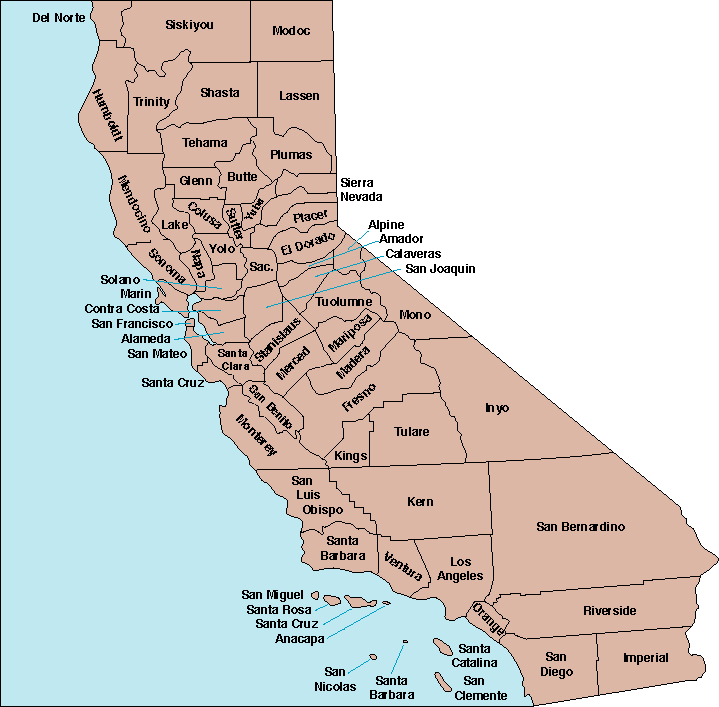
Curious to know how many counties California actually has? You’re not alone. From trivia nights to travel planning, the magic figure 58 always surfaces, and stillthose two digits barely scratches the surface.
This network of counties makes upa tapestry of extremes: fog-kissed seaside towns, snow-capped alpine districts, vast agricultural heartlands, and historic mission settlements. Each county carries its own story, shaped byimmigration waves, high-tech revolutions, and relentless population booms.
In the sections ahead, we’ll explore why California ended up with 58 counties, the real responsibilities counties shoulder, and the record-holders—from the tiniest to the most populous. Ultimately, you’ll own the knowledge—and sound like a local expert with confidence.
How the Golden State Reached 58 Counties
On statehood day in 1850, the map was a patchwork of just 27 jurisdictions. A tidal wave of forty-niners and immigrants compelled legislators to carve out new counties. By the end of the 1870s, the count had expanded toward 53 counties, and that same year the final five were added, cementing the now-famous tally of fifty-eight.
Assembly journals reveal that many break-away regions stemmed from three major pressures:
- Sheer distance left settlers days from the nearest courthouse.
- Tax disputes splitting river towns from hinterlands ignited partition drives.
- Ethnic enclaves demanded tailored governance.
In less than seventy years, the political map hardened. In modern times, no proposal to add a 59th county has cleared committee, leaving historians to label the era of county creation decisively over.
A County-by-County Tour of Terrains
Imagine a line from rugged Del Norte on the Oregon line to the date groves of Coachella, and you’ll thread through dozens of ecosystems. Ocean-brushed jurisdictions enjoy marine layers and mild winters, while great agricultural belts bank on irrigation.
- Mountain counties such as Mono, Mariposa, and Calaveras host ski resorts.
- River-delta territories mix levee farms with wetlands.
- Off-shore authorities like Santa Barbara oversee ferry routes.
Such variety explains why no two counties share identical economies. Weather sets tax bases and lifestyles.
Behind the Scenes at the County Level
In California’s layered structure, cities tackle local bylaws, but county boards oversee the bread-and-butter functions that make communities livable. From birth to death—marriage licenses, tax rolls, voter registries—all are archived at the recorder-assessor’s office.
Sheriff’s departments patrol towns too small for police forces, while superior courts hear civil suits. Health departments administer vaccination campaigns. Budget battles occur in monthly Board of Supervisors sessions.
Spotlight: Los Angeles County’s Scale
Tiny Alpine operates from a single two-story courthouse, highlighting how flexible county governance proves. There’s no single blueprint when land areas shift from 47 to 20 000 sq mi.
At day’s close, county offices bridge Sacramento’s big laws and local reality. Understanding their remit helps residents demand accountability.
Where the People and Money Are
Home to over 39 M souls, but those citizens clusters unevenly. LA County by itself hosts more than read more one resident in four. On the flip side, high-elevation Alpine rarely tops 1 200 inhabitants.
- Top headcount: County of Los Angeles
- Smallest by residents: Alpine County
- Biggest footprint: San Bernardino County
- Tightest borders: San Francisco
Fiscal bandwidth mirrors population spread. Silicon Valley counties see venture cash flow in at record rates, while interior ag counties depend on seasonal labour influxes. These fiscal contrasts informs legislative redistricting every decade.
Tracking each superlative pays dividends: county metrics shape property taxes and commute times.
The Ultimate California County Circuit
County-collecting hobbyists, visiting every single county is the new bucket-list quest. The classic route begins in the south-west corner, rolls up the Pacific Coast Highway, swings through Monterey, then zigzags across the Central Valley’s orchard belt, before climbing into the high Sierra for old stamp mills.
Regional Mini-Loops
- Coastal Kick-off – San Diego to Santa Barbara; 10 counties in a long weekend of days.
- Crop-Belt Drive – Grapes to rice paddies; produce-market run.
- Shasta & Siskiyou Turn – crater-rim roads; fire-lookout hikes.
Finish the circuit in El Centro, with quadruple-digit odometer gains. By then, you can brag that you’ve lived the answer to the county-count question—because you’ve seen them all!
Frequently Asked Questions
Wondering how the county system works? Start with these quick answers.
What is the total number of counties in CA?
Government documents list 58 counties—a number that hasn’t changed since 1907. Regardless of the source—be it Sacramento archives or federal census data: 58 in all.
Which county has the largest population in California?
The population heavyweight is Los Angeles County, home to over 10 million residents. From Hollywood to high tech, a mix of industries continues to fuel steady inflow.
What is the smallest county in California by population?
The crown for smallest population goes to Alpine County, with fewer than 1 200 inhabitants. Its remote Sierra setting naturally restricts settlement, creating tight-knit communities.
Which county covers the largest land area in California?
Geographic titan San Bernardino County covering a footprint larger than nine U.S. states. Its sheer scale means climate zones shift from alpine snow to Mojave heat within county lines.
How did California end up with 58 counties?
The current tally emerged from 19th-century partitioning, wrapping up after Imperial broke from San Diego in the early 20th century. Since then, proposals to add a 59th county have surfaced but never cleared the Legislature.
Can new counties still be created in California?
Technically, the California Constitution leaves the door open, but the hurdles are steep. Financial viability studies plus state-level sign-off deter most would-be county creators. That’s why no county lines have moved since the early 1900s.
What services do California counties provide to residents?
Behind the scenes, counties keep daily life functioning: voter registration, deed recording, health clinics, and sheriff patrols. Remove counties from the equation, and civil society would struggle to operate.